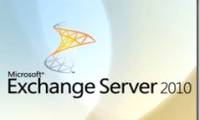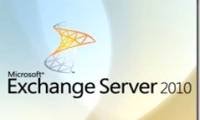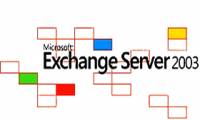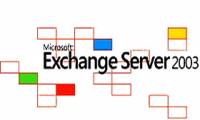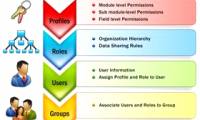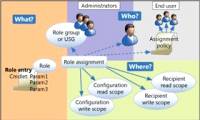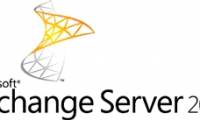
it has been a long time since we last introduced you to a microsoft product. we note that the 2010 exchange has not been mentioned. so why not try and check on its new features?
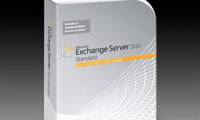
facing the increasing demands of organizations and businesses in exchanging information, so that they both save costs, operate faster, are more manageable, more reliable and better
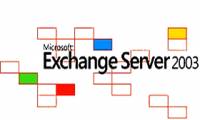
in this section, we have configured the settings related to the hub transport function server. in this section we continue to configure the exchange 2007 environment.
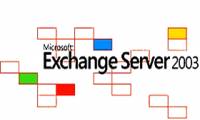
in the previous section, we have configured some of the necessary components in the exchange 2007 environment, such as the ccr and transport dumpster configuration parameters.

exchange server is a server software developed by microsoft that specializes in e-mail solutions and information exchange within businesses.

after windows 7 officially launched, all the attention of the tech community continued to pour into microsoft's next 'brand name' product, exchange server 2010 equipped with many

in exchange server 2010, powershell cmdlets has been greatly improved to manage multiple tools, and administrative tasks are made easier on emc.

in the previous article, we learned some new features in exchange server 2010, including: high availability, archiving, federation and sharing.

in this series, we will learn how to migrate data from exchange server 2003 system to exchange server 2007 system.

in this article, we will continue the process to build the exchange 2007 system starting with the installation of the hub transport and client access server.

in the previous two sections, we installed the first exchange 2007 servers, combining hub transport and client access servers in an exchange 2003 environment.

in essence, microsoft exchange server 2010 has been improved and integrated with new role based access control - rbac, and this model has provided users with more ways to monitor

in the previous section of the article, we showed you how to set up and configure the level of authorization with rbac - role based access by deploying predefined role groups via
 it has been a long time since we last introduced you to a microsoft product. we note that the 2010 exchange has not been mentioned. so why not try and check on its new features?
it has been a long time since we last introduced you to a microsoft product. we note that the 2010 exchange has not been mentioned. so why not try and check on its new features? facing the increasing demands of organizations and businesses in exchanging information, so that they both save costs, operate faster, are more manageable, more reliable and better
facing the increasing demands of organizations and businesses in exchanging information, so that they both save costs, operate faster, are more manageable, more reliable and better in this section, we have configured the settings related to the hub transport function server. in this section we continue to configure the exchange 2007 environment.
in this section, we have configured the settings related to the hub transport function server. in this section we continue to configure the exchange 2007 environment. in the previous section, we have configured some of the necessary components in the exchange 2007 environment, such as the ccr and transport dumpster configuration parameters.
in the previous section, we have configured some of the necessary components in the exchange 2007 environment, such as the ccr and transport dumpster configuration parameters. exchange server is a server software developed by microsoft that specializes in e-mail solutions and information exchange within businesses.
exchange server is a server software developed by microsoft that specializes in e-mail solutions and information exchange within businesses. after windows 7 officially launched, all the attention of the tech community continued to pour into microsoft's next 'brand name' product, exchange server 2010 equipped with many
after windows 7 officially launched, all the attention of the tech community continued to pour into microsoft's next 'brand name' product, exchange server 2010 equipped with many in exchange server 2010, powershell cmdlets has been greatly improved to manage multiple tools, and administrative tasks are made easier on emc.
in exchange server 2010, powershell cmdlets has been greatly improved to manage multiple tools, and administrative tasks are made easier on emc. in the previous article, we learned some new features in exchange server 2010, including: high availability, archiving, federation and sharing.
in the previous article, we learned some new features in exchange server 2010, including: high availability, archiving, federation and sharing. in this series, we will learn how to migrate data from exchange server 2003 system to exchange server 2007 system.
in this series, we will learn how to migrate data from exchange server 2003 system to exchange server 2007 system. in this article, we will continue the process to build the exchange 2007 system starting with the installation of the hub transport and client access server.
in this article, we will continue the process to build the exchange 2007 system starting with the installation of the hub transport and client access server. in the previous two sections, we installed the first exchange 2007 servers, combining hub transport and client access servers in an exchange 2003 environment.
in the previous two sections, we installed the first exchange 2007 servers, combining hub transport and client access servers in an exchange 2003 environment. in essence, microsoft exchange server 2010 has been improved and integrated with new role based access control - rbac, and this model has provided users with more ways to monitor
in essence, microsoft exchange server 2010 has been improved and integrated with new role based access control - rbac, and this model has provided users with more ways to monitor in the previous section of the article, we showed you how to set up and configure the level of authorization with rbac - role based access by deploying predefined role groups via
in the previous section of the article, we showed you how to set up and configure the level of authorization with rbac - role based access by deploying predefined role groups via
